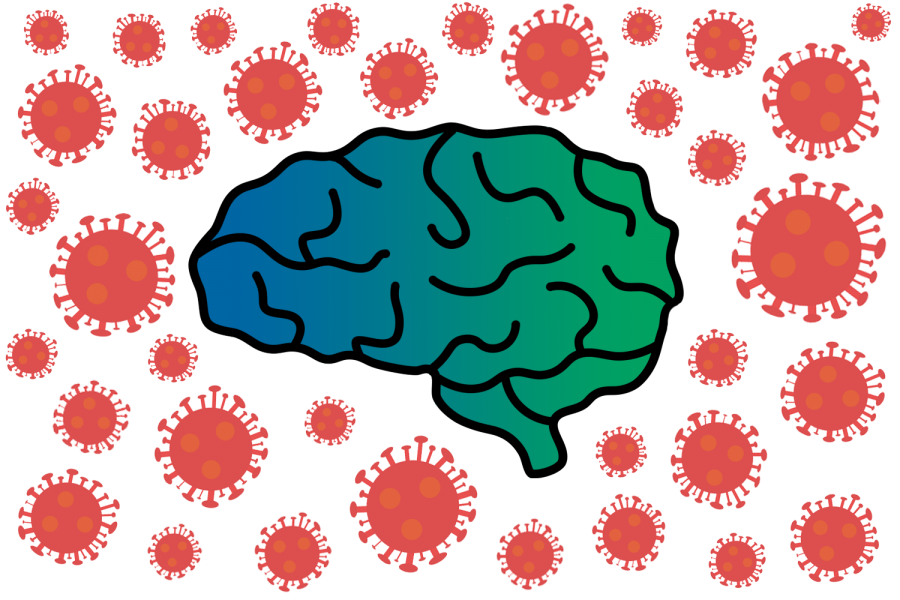Shelter in place orders create challenge for students’ mental health
Staying active and maintaining a schedule key to surviving isolation during pandemic
With shelter in place rules and social distancing, coping with mental health issues is becoming a reality for more students
It’s safe to say that this new period of isolation poses quite a significant change that most, if not all, of us weren’t expecting and certainly weren’t prepared for. This abrupt shift in our daily lives is likely to take a toll on our mental health.
On the one hand, students who have already been living with mental illnesses and disorders prior to the COVID-19 outbreak may find those illnesses more acute during this period of isolation. On the other, students who haven’t struggled much with their mental health may begin to encounter new challenges mentally as they process this anxiety-inducing time and revert to self-isolating.
Junior Dylan Levin who lives with OCD, depression, and anxiety noted that there has been a shift in how they affect her day to day.
“Before this my anxiety, depression, and OCD have come and gone sort of like in waves. Now that I am stuck at home, my mental illness has shown up a lot more,” Levin said. “I think it is because I am not able to distract myself or do things to occupy my time.”
Junior Henry Armstrong said that while he doesn’t feel completely overwhelmed, processing this new situation has still added additional worry.
“It’s pretty rough just staying home and seeing all this bad stuff happening,” he said. “I haven’t known anybody personally affected by the coronavirus but it’s still pretty scary.”
Senior Kelly Hagedorn has found it difficult to accept and process what COVID-19 and self-isolation means for herself.
“Just a month ago, I envisioned myself rowing my last spring season, going to graduation, going on senior project, and having closure within my high school education. Now I wonder whether any of this will happen,” she expressed. “For me, it’s easier to put this whole situation into perspective rather than focusing on how it’s impacting my own life.”
Levin said that the unpredictability of the situation has proven one of the most difficult aspects to cope with.
“I think it’s going to get worse before it gets better, which is something I’m having a hard time with coming to terms with,” she said.
Junior Elizabeth Ross who lives with depression also noted that, like Levin, self-isolation has done some harm to her mental health but for some different reasons, the primary one being that she’s forced to stay at home with her parents who sometimes subject her to emotional abuse.
“If you live a normal life outside of school then I’m assuming it’s easier for you to adjust to something like this. But for the kids who are scared to go home or just don’t wanna deal with the yelling have to be surrounded by their parents the whole day,” she explained. “Something like this could take a huge, huge mental toll on these teens, me being one of them.”
Social Work Department Chair Tiffany Myers stressed that it’s crucial for students to pay attention to how they’re reacting to this situation and be in constant evaluation of whether the way they are behaving and reacting is normal or abnormal for them. She said that while isolation isn’t a clear recipe for the development of a mental illness, it can definitely play a significant role for some people.
“Many people can experience depression or anxiety from long periods of isolation. While these symptoms do not necessarily mean that a person has a diagnosable mental illness, they are important to pay attention to,” she explained. “If someone notices that they are having trouble doing the activities associated with regular functioning like sleeping, eating, maintaining proper hygiene, talking with friends digitally, or completing school work, then it would be important for that student to reach out for help.”
Myers highlighted that it could be helpful for students to create a schedule to their day specifying times for meals and exercise. She also encourages students to find healthy ways to express their thoughts and feelings through activities such as journaling, talking with others, making music playlists, organizing their room, or making art projects.
Hagedorn has implemented numerous activities and practices into her routine such as journaling to help her navigate this often confusing and overwhelming time.
“[Journaling] helps me reflect on how I’m feeling. I write down any new concerns and statistics that would otherwise cloud my head,” Hagedorn said. “By writing things down, I’m not ignoring it, but rather letting out my emotions in a healthy way that allows me to move forward with the rest of my day.”
There are many other resources and tools listed on NT’s mental health tab on their COVID-19 website for both parents and students. The social work department is also available to help students figure out what will best help them during this time.
“Social workers are still checking their email regularly and students who need help can reach out for us to help coordinate resources,” Myers said.
Nothing about self-isolation is easy and it’s likely to get more challenging as it drags on. Despite our looming questions and concerns, Levin feels it’s best and healthiest to focus on the present.
“The future is always unknown, but at this point in time, it’s even more unpredictable, so I’ve just been taking one day at a time,” she said.







































